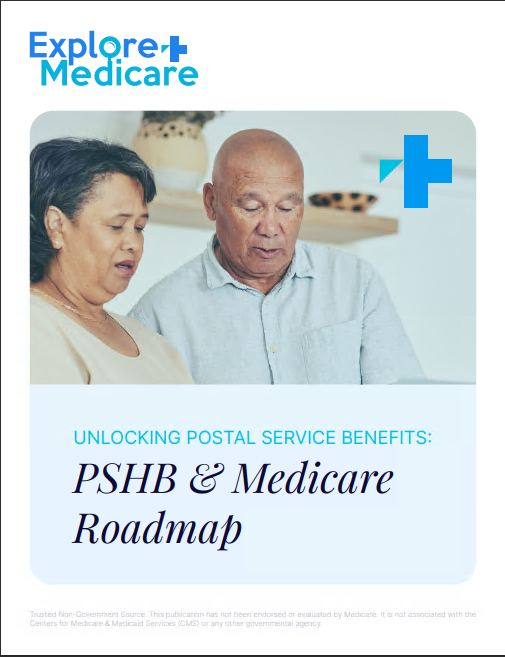Key Takeaways
-
Medicare Part A covers hospital-related services, but understanding its costs and coverage limits can help you avoid unexpected expenses.
-
Knowing when and how to enroll in Medicare Part A ensures you maximize your benefits and minimize out-of-pocket costs.
Medicare Part A: What You Should Know to Avoid Extra Costs
Medicare Part A provides hospital insurance for millions of Americans, covering inpatient hospital stays, skilled nursing facilities, hospice care, and some home health services. While many assume this coverage is free and unlimited, the reality is more complex. If you want to save money and make informed decisions about your healthcare, understanding the fine print of Medicare Part A is essential. Here are seven crucial facts to keep in mind.
1. Medicare Part A Isn’t Always Free
Many people qualify for premium-free Medicare Part A, but that isn’t guaranteed. If you or your spouse worked and paid Medicare taxes for at least 40 quarters (10 years), you won’t have to pay a monthly premium. However, if you have fewer than 40 quarters of Medicare-covered employment, you’ll need to pay a premium.
In 2025, the standard Part A premium is $518 per month if you have fewer than 30 quarters of work history, or $284 per month if you have 30 to 39 quarters.
If you’re not eligible for premium-free Part A, consider whether paying for it makes financial sense. You may still qualify for Medicaid or other state assistance programs to help cover the cost.
2. The Part A Deductible Resets Every Benefit Period
Unlike private insurance plans that have an annual deductible, Medicare Part A operates on a benefit period system. Each time you’re admitted to a hospital, a new benefit period begins.
For 2025, the Medicare Part A hospital deductible is $1,676 per benefit period. This means that if you are admitted to the hospital multiple times in a year, you may have to pay this deductible more than once.
To avoid repeated costs, make sure you understand how benefit periods work and explore supplemental insurance options that can help cover these expenses.
3. Hospital Stays Come with Daily Coinsurance Costs
While Part A covers most hospital costs, you’re responsible for coinsurance payments if your hospital stay extends beyond a certain number of days.
-
Days 1-60: No coinsurance after paying the deductible.
-
Days 61-90: $419 per day in coinsurance.
-
Days 91 and beyond: $838 per day while using lifetime reserve days (up to 60 days in a lifetime).
-
Beyond lifetime reserve days: You pay all costs.
If you anticipate a long hospital stay, knowing these costs in advance can help you budget accordingly and explore options to reduce your out-of-pocket expenses.
4. Skilled Nursing Facility Care Is Only Partially Covered
Many people assume Medicare Part A covers extended stays in skilled nursing facilities (SNFs), but coverage is limited.
-
First 20 days: Fully covered by Medicare Part A.
-
Days 21-100: $209.50 per day in coinsurance.
-
Beyond 100 days: You pay all costs.
To qualify for SNF coverage, you must have a qualifying hospital stay of at least three consecutive days before admission. If you leave the SNF and are readmitted more than 30 days later, you must meet the hospital stay requirement again.
Long-term care services, such as custodial care, are not covered, which means you may need alternative plans for ongoing care.
5. Home Health Care Is Covered, But With Limitations
Medicare Part A covers certain home health services, but there are strict rules about eligibility.
To qualify, you must:
-
Be homebound, meaning leaving home requires significant effort.
-
Need intermittent skilled nursing care (not 24/7 care).
-
Have services ordered by a doctor and provided by a Medicare-approved agency.
Medicare covers 100% of home health services, but durable medical equipment (DME), such as wheelchairs and walkers, falls under Medicare Part B, which requires 20% coinsurance.
Understanding these limits helps you plan for home healthcare needs without unexpected costs.
6. Hospice Care Is Fully Covered Under Medicare Part A
Medicare Part A provides comprehensive hospice coverage, ensuring patients receive comfort care at the end of life. This includes:
-
Medical services and nursing care.
-
Prescription drugs for symptom management.
-
Grief and bereavement counseling for family members.
Hospice care is fully covered with no deductibles or coinsurance, except for a small copayment of up to $5 per prescription for symptom relief medications.
To qualify, a doctor must certify that you have a terminal illness with a life expectancy of six months or less, and you must agree to forgo curative treatment for the illness.
7. Delaying Enrollment Could Lead to Penalties
If you don’t qualify for premium-free Medicare Part A and delay enrollment when first eligible, you may face late enrollment penalties.
For each year you delay enrollment, your monthly premium increases by 10%. This penalty applies for twice the number of years you delayed signing up.
For example, if you wait three years to enroll, you’ll pay the higher premium for six years.
To avoid penalties, enroll as soon as you become eligible unless you have other qualifying coverage, such as employer-sponsored insurance.
Maximize Your Medicare Part A Benefits
Medicare Part A is a vital component of your healthcare coverage, but it’s not entirely free, nor does it cover everything. Understanding its costs, limitations, and enrollment rules can save you money and prevent unexpected expenses.
To make the most of your benefits, consider additional coverage options, stay informed about changes in Medicare policies, and plan ahead for potential hospital or nursing care costs. If you need help navigating your choices, speaking with a licensed agent listed on this website can help you find the right coverage to suit your needs.









